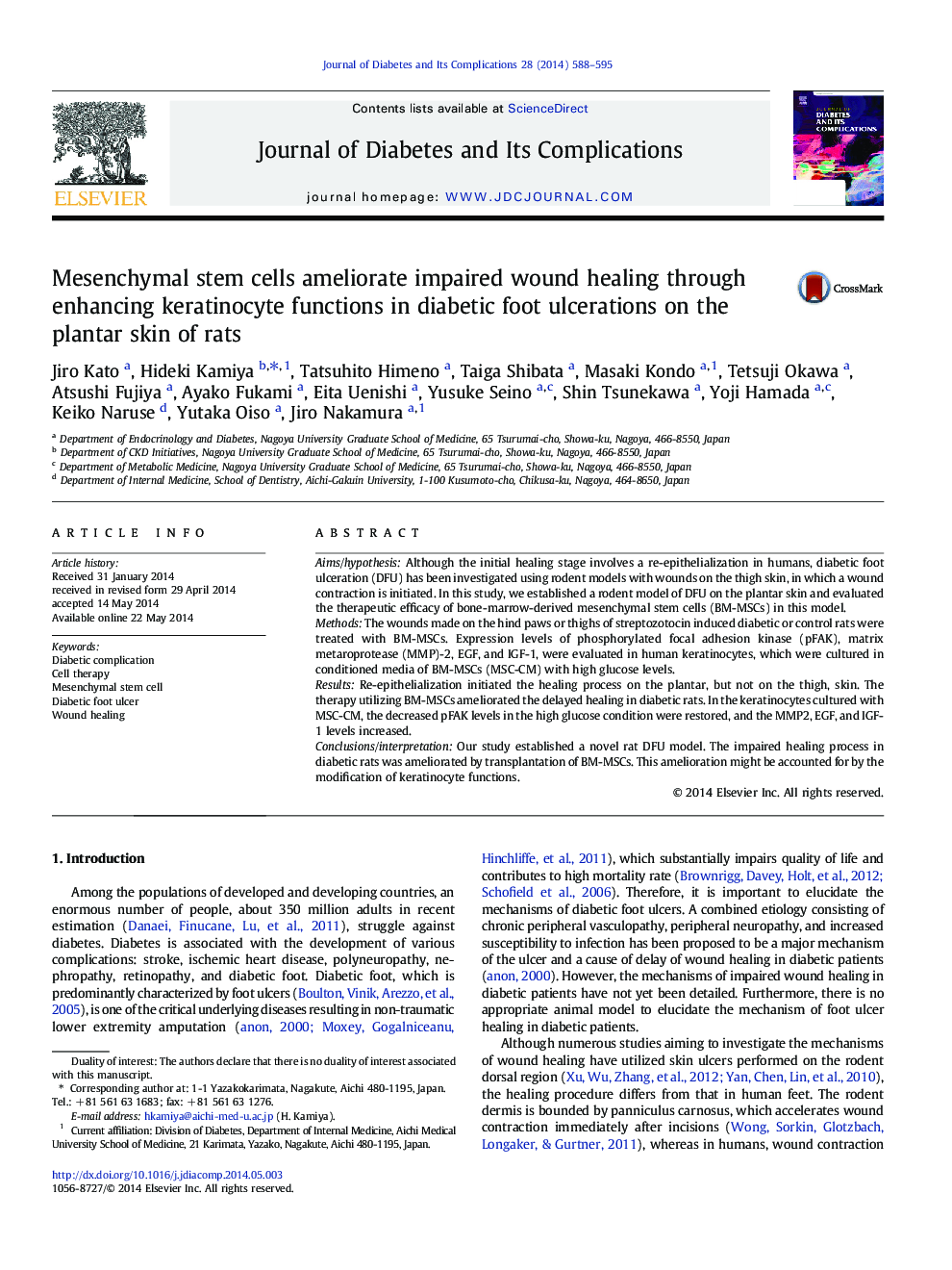| Article ID | Journal | Published Year | Pages | File Type |
|---|---|---|---|---|
| 5902688 | Journal of Diabetes and its Complications | 2014 | 8 Pages |
Aims/hypothesisAlthough the initial healing stage involves a re-epithelialization in humans, diabetic foot ulceration (DFU) has been investigated using rodent models with wounds on the thigh skin, in which a wound contraction is initiated. In this study, we established a rodent model of DFU on the plantar skin and evaluated the therapeutic efficacy of bone-marrow-derived mesenchymal stem cells (BM-MSCs) in this model.MethodsThe wounds made on the hind paws or thighs of streptozotocin induced diabetic or control rats were treated with BM-MSCs. Expression levels of phosphorylated focal adhesion kinase (pFAK), matrix metaroprotease (MMP)-2, EGF, and IGF-1, were evaluated in human keratinocytes, which were cultured in conditioned media of BM-MSCs (MSC-CM) with high glucose levels.ResultsRe-epithelialization initiated the healing process on the plantar, but not on the thigh, skin. The therapy utilizing BM-MSCs ameliorated the delayed healing in diabetic rats. In the keratinocytes cultured with MSC-CM, the decreased pFAK levels in the high glucose condition were restored, and the MMP2, EGF, and IGF-1 levels increased.Conclusions/interpretationOur study established a novel rat DFU model. The impaired healing process in diabetic rats was ameliorated by transplantation of BM-MSCs. This amelioration might be accounted for by the modification of keratinocyte functions.
